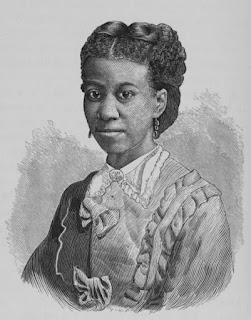Read Part One HERE
When in 1878, an exhausted and exasperated White finally resigned as director, Ella stood in for him for the troupe's last months. She joined White's subsequent troupe of Jubilees but retired from Jubilee work when he disbanded the group in 1882.
Ella built a house for her mother and half sister in Nashville, and married one of the most prominent black ministers in the US, Rev. George Washington Moore. They lived at first in Washington D.C., agitating against the saloons in their neighbourhood until it had been transformed into one of the most desirable areas in the city.
Returning to Frisk, she trained and inspired generations of Jubilees, and by the time of her death in Nashville in 1915, Ella had become in intellect, in spirit, and in musical attainment one of the truly gifted women of the world.
Rrad Part Sixteen HERE








